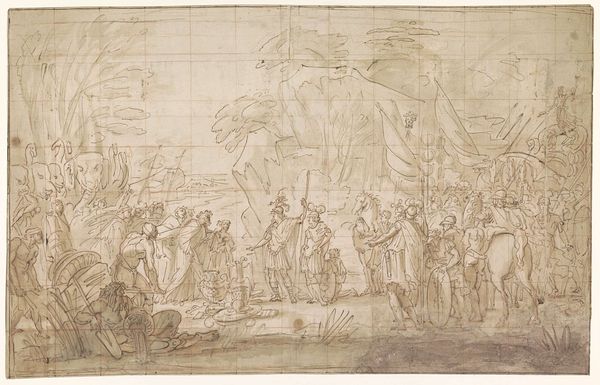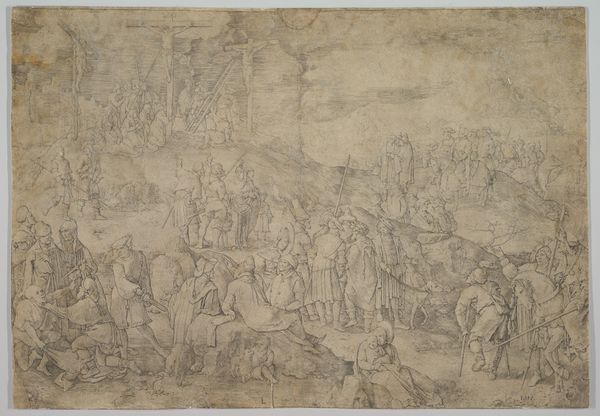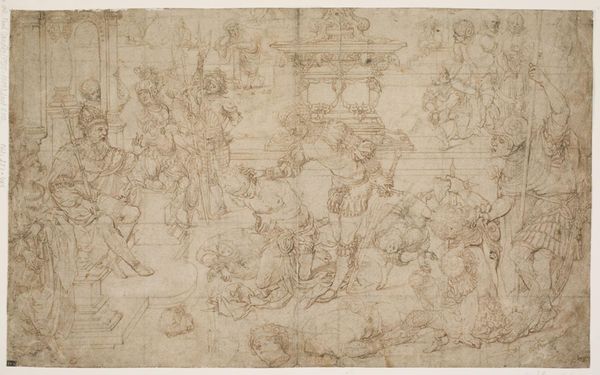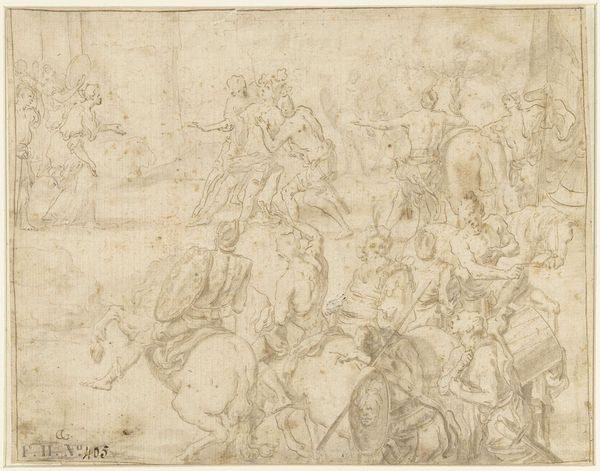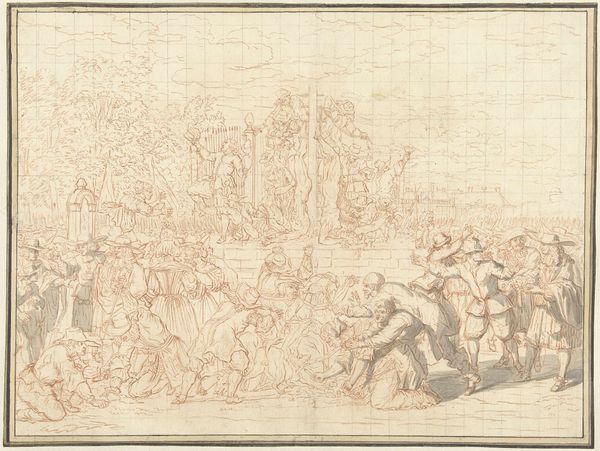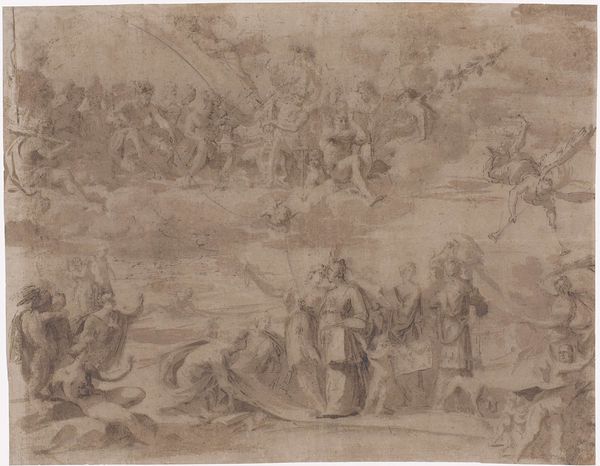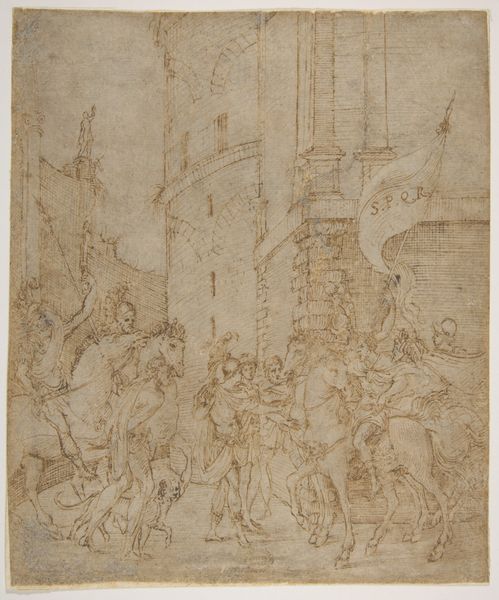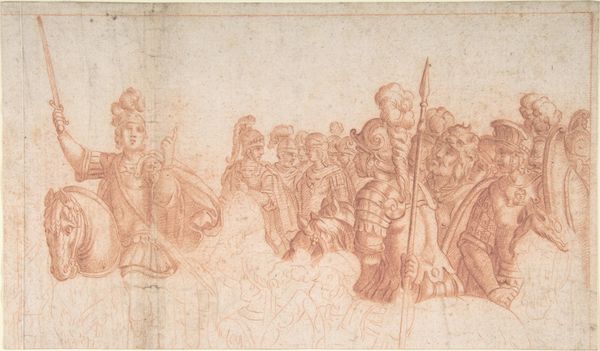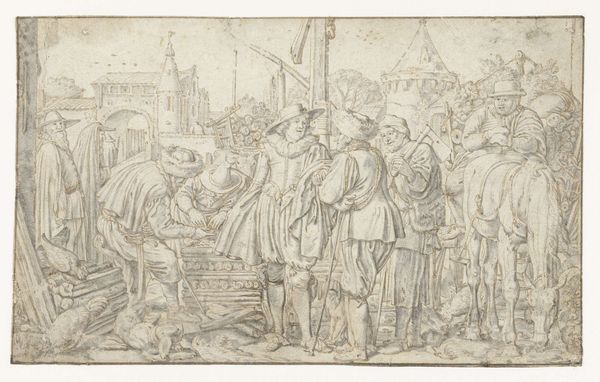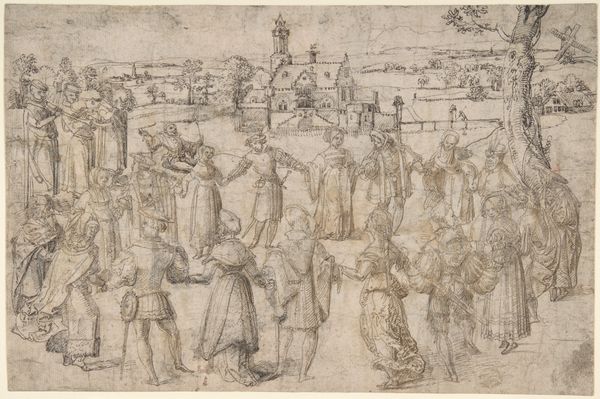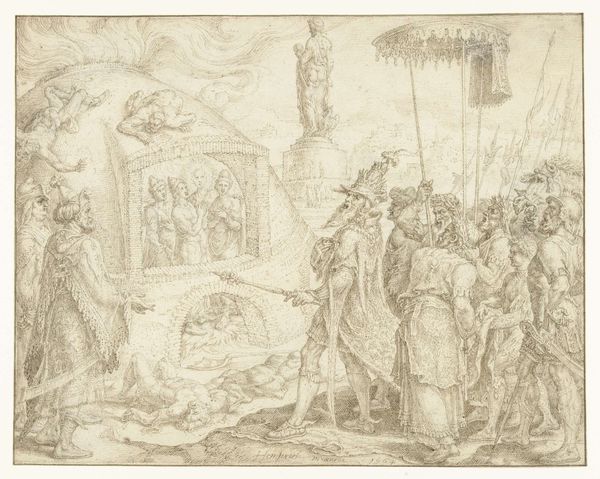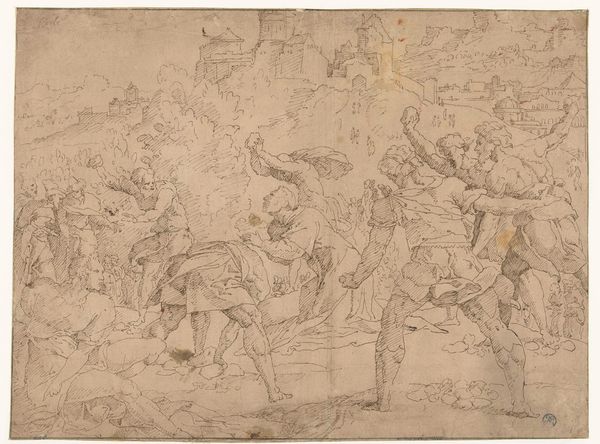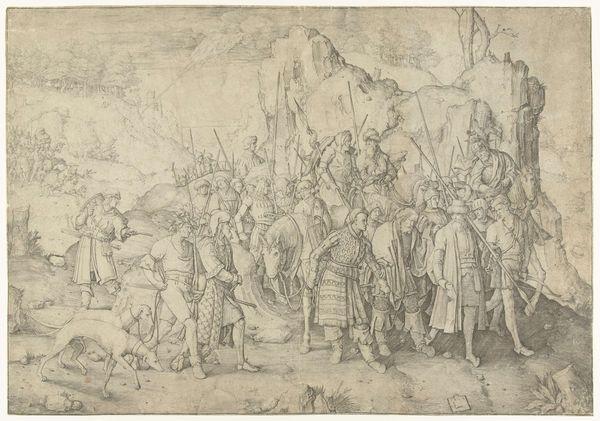
Satire op het machtsmisbruik van de rooms-katholieke geestelijkheid 1527 - 1541
0:00
0:00
drawing, ink, pen
#
drawing
#
allegory
#
pen sketch
#
caricature
#
ink
#
pen-ink sketch
#
pen work
#
pen
#
history-painting
#
northern-renaissance
Dimensions: height 417 mm, width 777 mm
Copyright: Rijks Museum: Open Domain
Curator: Here we have "Satire on the Abuse of Power by the Roman Catholic Clergy," a pen and ink drawing from somewhere between 1527 and 1541, attributed to Bernard van Orley. Editor: My first impression is one of overwhelming density. It's a busy composition, almost claustrophobic. Curator: Indeed. The density underscores the satirical theme, the way the artist is critiquing societal structures. Observe how the various elements—buildings, figures, inscriptions—are arranged to create layers of meaning. Note the quality of the line. There’s a clear hierarchy established, drawing the eye through the chaos. Editor: The sheer amount of detail is striking, and yet the line work remains quite fine, almost delicate. I’m thinking about the artist’s hand, painstakingly rendering each element. What was the process? Was this a preliminary sketch for something larger, perhaps a print? Curator: Quite possibly. Its function, I would suggest, relies more on its allegorical structure. Notice how figures are posed within architectonic frames that reinforce meaning and didactic purpose, reflecting the style characteristic of the Northern Renaissance. Editor: Allegorical frameworks require interpretation. But it feels necessary to ground such symbolic language. Think about the cost of paper, the preparation of the ink. What sort of environment enabled its making, what freedoms afforded by patrons or lack thereof? I wonder too, who did this piece speak to in its own time and how did they react to it? Curator: A potent question, and I suggest the structure allows multiple perspectives. Its didactic structure allowed people from various social statuses to recognize and critique these problems themselves and discuss how it impacted them personally, then and perhaps even today. Editor: True enough, by observing its construction, it is difficult not to consider how this visual language functions, from conception to its reception in present-day society. I concede this drawing continues to ignite passionate debate and contemplation through careful interpretation. Curator: An exceptional artwork to consider—indeed it encourages reflection, by embracing its artistic framework. Editor: An incisive exercise on how artistic construction reflects larger realities through physical context.
Comments
No comments
Be the first to comment and join the conversation on the ultimate creative platform.
